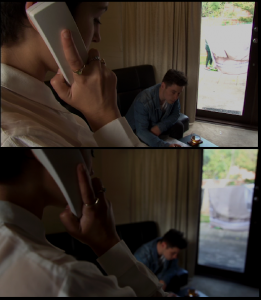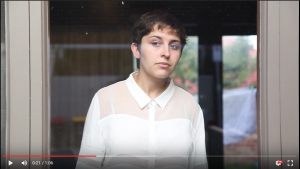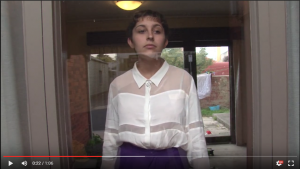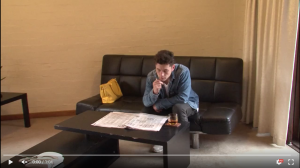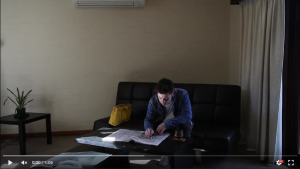As a student filmmaker who often just wanted to get things done I found myself neglecting the potential of focal length, using it as a mere zoom to frame my shots. However, I knew choosing a focal length was a more complex decision than simply what’s convenient to frame a shot. For this reason, I chose to focus on focal length for my individual research project for the second half of the semester. I set out to explore the function of different focal lengths and its effect on perceived perspective.
I began my research journey with an exercise that compared physical focal lengths in relation to different camera sensor sizes. I shot the same scene with two cameras that had different sized sensors: the Sony Z7 which has a tiny 1/3 inch sensor and the Canon 5D which has a full-framed sensor the same size as 35mm format film. By shooting on the same settings on both cameras from the same position changing only the physical focal lengths and ISO when needed I was able to compare the aesthetic and practical difference.
I knew from the beginning I would have to use much shorter focal lengths on the Z7 to obtain the same framing as the 5D footage in which I shot first. The shorter physical focal length corresponded with a smaller entrance pupil size resulting in a larger focal area. Furthermore, the perceived distance between characters and the background is exaggerated on the wider focal lengths. Moreover, by being forced to use ultra-wide focal lengths such as 6mm and 10mm the scene was visually warped which distracted from the ‘illusion’ of film. Overall, the shots taken on the full-framed 5D were more aesthetically pleasing with most of the shots using close to the ‘standard’ focal length of 50mm.
For my next step in my investigation I wanted to explore a different application of focal length. When I first proposed this idea to my studio I showed a scene from the film Return of the Prodigal Son which consists of a POV shot from the backseat a vehicle on a relatively long focal length. I found this particularly interesting as shots from inside moving vehicles are normally shot on shorter focal lengths as it minimises the apparent shake of the vehicle.
I decided to compare the perspective and resulting effects of shooting with a short and relatively longer focal length from inside a vehicle. I shot using a focal length of 24mm from the front seat and then 70mm from the backseat providing similar framing. I found that the shots taken at 24mm where noticeably less shakey. However, there were some instances within the clip where the 70mm provided a smoother image. This was due to me being able to better stabilise the camera from the backseat. In addition, being in the backseat minimised the physical movement of the camera especially when the driver hit a speed bump with one wheel first.
Shooting on the 24mm from the front seat displayed more of the surrounding houses and more of the road immediately in front of the vehicle. While this is the most common techniques and was generally a lot smoother, there was advantages to choosing to use a longer focal length. For instance it enables you to shoot from the backseat and as a result the centre of vehicle, while still minimising the amount of interior visually present. Furthermore, you are able to achieve a narrower field of view in order to focus the audience’s attention on a vehicle, object or character directly in front of the car. Moreover, the longer focal length tends to give a more observational POV and may be suited to a ‘tailing’ scene. Ultimately, the two techniques give different perspectives and while shorter focal lengths are generally used it really depends on the situation and the desired effect.
For my final experiment I decided to compare using a zoom lens and a 50mm fixed lens. This was an appropriate follow-up to my original exercise where I discovered that the shots on the 5D which were mostly close to a standard focal length were more aesthetically pleasing. I shot the same scene twice with the same framing on the two different lenses.
Ultimately, this practical investigation has expanded my knowledge of focal length and its application in filmmaking. I will no longer use focal length as a ‘mere zoom’ and will think carefully about which focal length is most suited to what I am shooting. I have become familiar with both the practical advantages/challenges of various focal lengths as their visual aesthetics. A Scene in Cinema has not only educated me on focal length but also coverage/decoupage as a whole. I hope to apply everything I’ve learnt this semester to all of my work in the future.
Over and out,
For the last time
Luke


